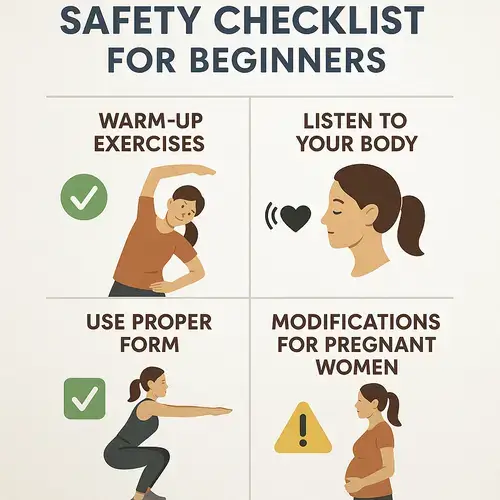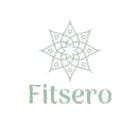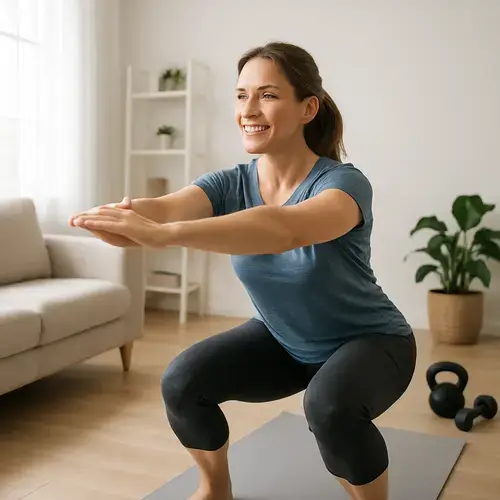Population-Specific Adaptations and Safety
The 7 minute workout for beginners offers a way to fit exercise into your life without feeling sore, frustrated, or worried about injury. What if starting a new routine could feel safe and doable—right from day one?

Disclosure: This article contains affiliate links. We may earn a commission at no extra cost to you.
Starting the 7 minute workout for beginners is about more than following a list of exercises—it’s about tailoring movement to fit your current needs, goals, and body. One of the smartest first steps? Running through a personalized safety checklist:
- Check with your healthcare provider if you have chronic health issues, take medications, or are pregnant. A simple check-in can spot red flags before they turn into risks. For most healthy adults, light exercise is safe, but individual recommendations can vary. Source: CDC
- Start slow and listen to your body. It’s easy to try and “keep up,” but your best guide is watching for unusual pain, dizziness, or shortness of breath. Pause if you feel anything out of the ordinary.
- Warm up before you go hard. Even a few minutes of dynamic stretching makes a difference for joint safety and comfort—especially if you sit for long periods.
When adapting the routine, here’s how to address common population needs:
- Pregnant beginners: Avoid moves that have you lying flat after the first trimester or straining the core (like sit-ups and crunches). Substitute with supported squats, wall push-ups, or standing cardio. Prioritize balance and always consult maternity guidance for exercise. Source: ACOG
- Older adults or those with limited mobility: Swap jumping jacks for step-outs or try a chair-based version of the 7 minute workout. Focus on slow, controlled movements that build confidence and improve balance—fall prevention matters as much as fitness.
- Teens and youth: Form always beats speed. Encouragement should center around learning movement patterns, not competing for reps or time.
For everyone, these pacing and modification tips keep workouts accessible:
- Take rests as needed. Pausing doesn’t mean failing; it’s smart self-regulation.
- Lower exercise intensity (half squat, knee push-ups) while form catches up.
- Use a timer with audible cues so you’re not distracted watching the clock.
Feeling unsure or overwhelmed at any stage? Programs like the 7-Minute Ageless Body Secret for women are designed with guided, joint-friendly routines and built-in modifications suitable for real beginners, including those managing age, busy schedules, or lower fitness confidence.
Building safety and personalization into your 7 minute workout for beginners not only prevents injury—it helps you build confidence in your routine. Consider this the real secret to results and to making this simple plan a healthy habit, not a short-lived challenge. If you want professionally supported guidance tailored for older women and customizable to most starting points, compare what’s inside the Ageless Body program—instant access here.
Credible Science: Citations, References, and EEAT
Evidence and Scientific Context for the 7 Minute Workout for Beginners
The 7 minute workout for beginners draws on a segment of exercise science known as high-intensity circuit training (HICT). These brief routines—popularized through both academic research and mainstream press—generally involve a consecutive series of bodyweight exercises performed at high effort, with little rest.

The most-cited starting point is a 2013 article by exercise scientists at the Human Performance Institute, which proposed that short, intense circuits can offer cardio-metabolic benefits similar to traditional endurance training when performed correctly and at the proper intensity. Source: ACSM’s Health & Fitness Journal For beginners, the key adaptations attributed to these routines include improvements in cardiorespiratory fitness, muscular strength, and body composition.
That said, while many studies do confirm aerobic and strength gains in short-duration, high-effort intervals, the research base for programs specifically branded as “7 minute workouts”—particularly among absolute beginners, older adults, or those with health conditions—remains limited compared to traditional multi-set resistance and moderate-intensity cardio protocols.
The practicality and safety of starting HICT in a home setting are still debated, especially without direct supervision. Source: British Journal of Sports Medicine Experts generally recommend that newcomers modify exercises as needed, focusing on form and listening to their body, to reduce the risk of strain or injury.
The most consistent benefit shown for the 7 minute workout style? Increased exercise adherence. People are more likely to stick with a routine if it fits into busy schedules or feels “doable” each day. When HICT is practiced regularly (3–5 times per week), even short sessions can support weight management, heart health, and improved mood—though these effects can vary by age, baseline health, and intensity achieved. Source: Centers for Disease Control and Prevention
Limitations, Uncertainties, and Ongoing Research
- Long-term outcomes: Most studies focus on short- to medium-term benefits; there’s less consensus about whether “7 minute workouts” alone suffice for optimal, sustained health or weight loss over years.
- Population gaps: Research is dominated by younger to middle-aged adults. Evidence for seniors, people with mobility issues, or those with chronic disease is minimal.
- Intensity variable: Reported benefits depend heavily on maintaining near-maximal effort throughout the circuit. Many beginners may struggle to safely reach this threshold at first.
- Muscle strength and toning: While HICT can build some strength, it’s less effective for maximal muscle gain compared to traditional resistance training with progressive overload.
For those weighing whether a 7 minute approach meets their goals, it may help to combine these efficient workouts with walks, stretching, or light resistance routines for a more comprehensive beginner fitness plan. If your primary struggle is motivation or making a routine stick, these short sessions can serve as a springboard—see more strategies to get motivated for the gym or return to consistent exercise.
Key Citations and References
- Klika, B., & Jordan, C. (2013). High-intensity circuit training using body weight: maximum results with minimal investment. ACSM’s Health & Fitness Journal, 17(3), 8–13. Source
- Bartlett, J. D., et al. (2017). The role of high-intensity interval training in healthy and clinical populations. British Journal of Sports Medicine, 51(17), 1317–1328. Source
- Centers for Disease Control and Prevention. (Updated 2022). How much physical activity do adults need? Source: CDC
Nuanced Summary :7 minute workout for beginners
The current scientific consensus supports the 7 minute workout for beginners as an accessible, efficient introduction to physical activity, with solid potential for improved fitness and wellbeing—especially if longer routines feel intimidating. Its main scientific strength is practicality: higher adherence and psychological accessibility, not superior physiological outcomes.
For best results and safety, beginners should adapt the exercises to their own pace, consider a warm-up, and not expect the same muscle growth or fat loss as more advanced or longer-duration routines would offer.
Those seeking a program designed specifically for time-crunched women, with joint-friendly, beginner-adapted moves and a motivational structure, might explore the 7-Minute Ageless Body Secret digital fitness system for a simplified start.
If you’re just getting started, remember that supplementing these seven-minute routines with additional light activities—like walking, stretching, or gentle yoga—can help round out your fitness plan and build confidence. For more ideas or motivation on starting your wellness journey, topics such as finding motivation when tired or easy exercises for beginners at home can be helpful resources.
Sources
- Bartlett, J. D., et al. (2017). The role of high-intensity interval training in healthy and clinical populations. British Journal of Sports Medicine, 51(17), 1317–1328. Source
- Centers for Disease Control and Prevention. (Updated 2022). How much physical activity do adults need? Source: CDC
- Klika, B., & Jordan, C. (2013). High-intensity circuit training using body weight: maximum results with minimal investment. ACSM’s Health & Fitness Journal, 17(3), 8–13. Source

